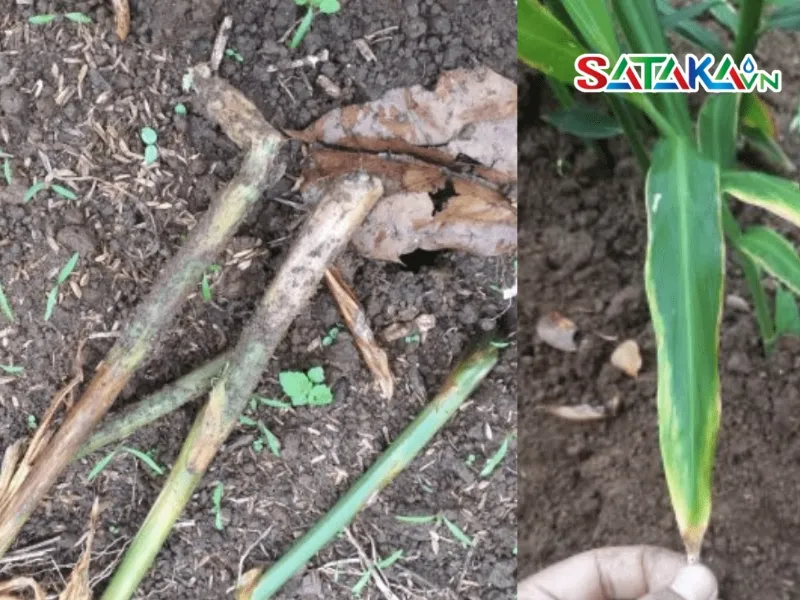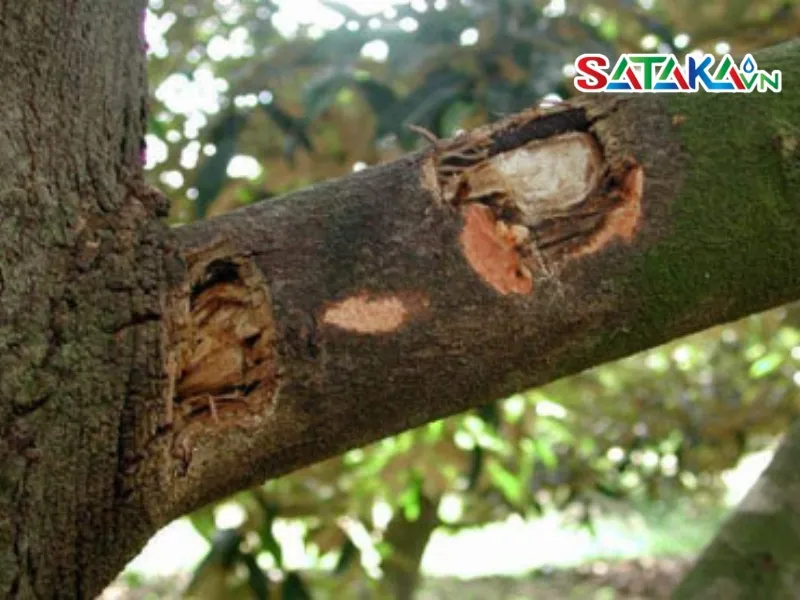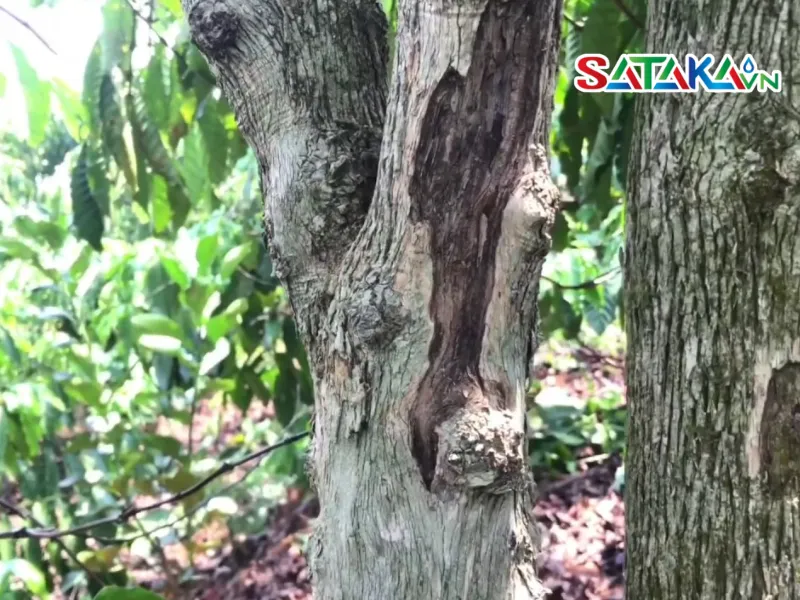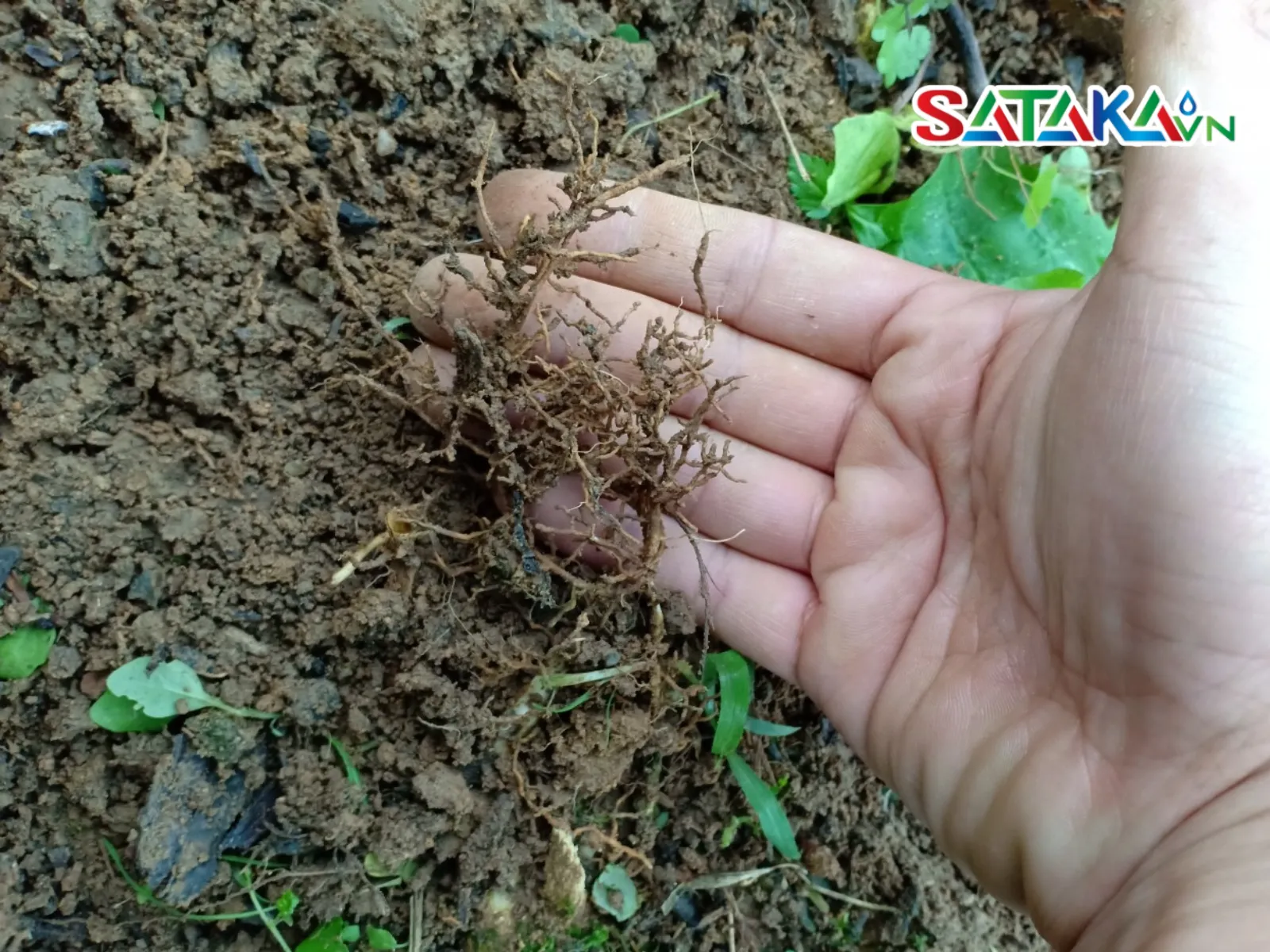Fungi in the soil cause damage to plants, from root rot to stem cracking that reduces yields. Learn how to identify and prevent it through the article below with Sataka.
In modern agriculture, protecting crops from soil-borne fungal diseases is crucial for maintaining productivity and plant health. Soil fungi can cause various severe diseases, ranging from root rot and wilt to stem cracks, adversely affecting plant growth and development. Understanding these fungi and the symptoms they cause helps farmers implement effective prevention and control measures.
Pythium fungi, part of the Oomycetes class within the Chromista kingdom, pose significant threats to crops if not managed effectively. These fungi thrive in soil and grow robustly in temperatures between 25–28°C but can survive in a range from as low as 5–10°C to as high as 35°C.

Soil is important to provide nutrients for leaves
Pythium fungi primarily cause seedling damping-off and root rot in mature plants. They also contribute to tuber rot in crops like potatoes, carrots, and ginger. The spread of Pythium can lead to severe issues, affecting crop yield and quality.
Addressing Pythium-related problems requires implementing effective agricultural practices. Preventive measures are vital to safeguard crops from Pythium fungi and their harmful effects.
Phytophthora fungi, another member of the Oomycetes class, significantly harm crop health and productivity. These fungi attack various plant parts, including roots, stems, and branches, leading to diseases such as root rot, stem cracks, fruit rot in durians, and quick wilt in pepper plants.
Stem Cracks with Oozing Resin: This severe disease creates brown lesions on the bark, which crack open to expose dark brown wood, often accompanied by resin leakage. As the disease progresses, it weakens the plant, leading to stunted growth and eventual death.
Root Rot and Leaf Yellowing: Often associated with nematode or mealybug damage, this condition starts with leaves turning yellow and wilting, eventually resulting in defoliation. In advanced stages, the roots decay, with the outer bark peeling off to reveal brown inner tissues, ultimately killing the plant.
Durian Fruit Rot: Initial symptoms include water-soaked black spots on the fruit, which expand into large, wet, and decaying patches. White fungal threads may appear on infected areas. Depending on the infection's location, fungi can spread through air or water, damaging the fruit.
Quick Wilt in Pepper Plants: Phytophthora fungi primarily attack the underground stem. Infected pepper plants wilt rapidly, starting from the tips while leaves remain green initially. The roots and underground stems rot, with plants dying within 10–15 days of symptom onset.

Trees have cracked trunks with pus leaking caused by the Phytophthora fungus in the soil
Fusarium fungi are common soil pathogens responsible for severe plant diseases. They thrive at optimal temperatures of 25–28°C and significantly affect crop health and productivity.
Passion Fruit Stem Swelling and Cracking: Symptoms include swollen stem bases with dark brown streaks. Cutting through the swollen area reveals discolored vascular tissues. The stem eventually cracks, showing white fungal growth and red spots, damaging the entire plant.
Coffee Stem Cracking: Brown-black lesions on coffee stems and branches may crack and decay. These lesions block water and nutrient transport, leading to wilting leaves and plant death if untreated.
Sweet Potato Vine Wilt (Purple Blight): Fusarium attacks cause purple discoloration on leaves, progressing to yellowing and wilting. The lower stems develop brown-black streaks, which may crack, with the inner vascular tissues turning brown. Severe infections disrupt water and nutrient flow, leading to stunted growth and eventual death.

Coffee stem cracking is also partly caused by the soil fungus Fusarium
Rhizoctonia fungi are a large group of soil pathogens causing various severe plant diseases. They thrive at 25–30°C and affect plants throughout their growth stages, particularly seedlings
Seedling Damping-Off: Symptoms include water-soaked and narrowed stem bases, causing seedlings to collapse. Although leaves remain green initially, they soon wilt, reducing survival rates.
Stem Rot in Mature Plants: Rhizoctonia fungi infect the stem base and bark, creating irregular brown lesions. These areas may sink, crack, and decay, leading to leaf wilting, defoliation, and plant death if untreated.

Soil fungi cause various plant diseases, significantly impacting crop yields and quality. Early detection of symptoms and timely preventive measures are essential for protecting crops. Investing in the management and treatment of soil-borne fungal diseases enhances agricultural efficiency and ensures sustainable crop growth.
Thank you for reading this article by Sataka about harmful fungi. Stay informed about plant diseases to take swift and effective action!